This was published 1 year ago
He’d finished a PhD. Then long COVID hit and he couldn’t make dinner
An academic, suddenly struggling to prepare a simple meal. A once-athletic teen, crippled by fatigue. A half-marathon hopeful, now relying on a wheelchair. More than three years into the pandemic, scientists are still trying to unravel the mysteries of long COVID.
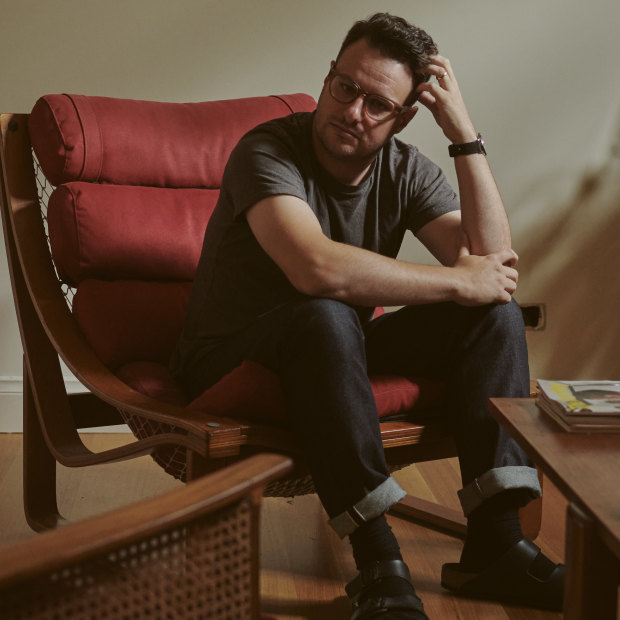
Tom Andrews, who finished a PhD last year before suffering long COVID, says “brain fog” doesn’t come close to describing the cognitive impairment: “It’s more like an acquired brain injury.” Credit: Josh Robenstone
Like millions of other people, I caught COVID-19 last year. I still remember the sense of dread when the telltale second bar emerged, languidly, on a RAT. That other small red line, startling, so incontrovertibly there, sparked a rush of panic as hot as the fever coming on. Here it was at last, the spiky invader the world had come to fear. The small, plastic rectangle sitting on the kitchen table was like an unsolicited ticket to an uncertain destination; a journey that would be unpleasant, at very least, probably rocky, lonely, and possibly fatal.
It was only after I’d been ill for a few days that a new fear bubbled up. It seemed I wasn’t going to die right then, but would I join the small but not insignificant percentage of people in whom the virus appeared to have “left the building” but deposited a nasty calling card? Would my health be radically changed for months, if not years?
I knew long COVID could be bad. I wouldn’t realise just how bad until I spoke to “long-haulers” for this story months later. The worst affected aren’t just a bit tired. They’re the barely walking wounded, the forgotten casualties of a war we’d like to declare over, even as each new surge of COVID threatens to lead to new cases. Long COVID does more than debilitate mind and body. It crushes the spirit. As one man in the prime of his life would tell me: “I can’t do any of the things I used to do – work, socialise, go to the gym, travel. It has been a nightmare getting help, and I have no idea when it will end. Some days I wake up and wonder why I exist.”
Back in 2020, cases of long COVID seemed like curiosities. In reality, they were harbingers of a condition that one concerned doctor in the US – where it’s affecting tens of millions – has labelled a “mass disabling event”. The Australian Medical Association president, Professor Steve Robson, recently noted one of the many fallouts from COVID could be “a tsunami of people with long-term problems”.
There is no test for long COVID. It’s self-reported and relies on a diagnosis of exclusion, which is one reason more people aged 20 to 55 are diagnosed with it than older people, who have other health issues to muddy the picture. The World Health Organisation defines it as having continuing or new symptoms for at least three months after the initial infection, with these symptoms lasting at least two months, with no alternative explanation.
Estimates of just how many cases there are vary wildly, confused by sketchy reporting, the impact of vaccination, different definitions, different strains producing different outcomes, and missed diagnoses. Overseas data suggests it affects at least 10 per cent of people who get COVID, but that’s thought to be an underestimate. As of last December, the WHO put it at 10 to 20 per cent. And an Australian National University study released last October estimated 5 per cent of Australians infected with COVID had symptoms for more than three months.
Long COVID is the “post-COVID” headache that governments hope will go away. At a press conference last October, federal Chief Medical Officer Paul Kelly seemed to suggest it wasn’t a significant problem here. Thanks to vaccination and the milder Omicron, he said, “we’re not seeing a major picture of long COVID.”
Professor Steven Faux, a rehab medicine specialist and co-lead of the Long COVID-19 clinic at Sydney’s St Vincent’s Hospital, begged to differ, likening the comments to “pulling the sheet over your head”.
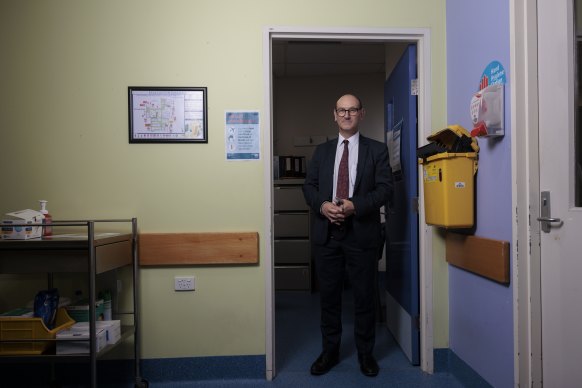
Rehab medicine specialist Steven Faux says trials are expensive and there has to be a rationale.Credit: Brook Mitchell
“Mostly we’re seeing people who got [COVID] … in the Omicron wave,” Faux told media at the time, “… and the majority are vaccinated.” He pointed to a UK study, featured in The Lancet in June 2022, that showed even those who were triple vaccinated and infected with Omicron had a long COVID rate of 5 per cent (with Delta, it was slightly more than 10 per cent).
“[Five per cent] is not a major problem, unless you consider that over 10 million Australians have had COVID,” said Faux. (The figure is now 11 million.) With the COVID wave that has washed through China and new variants like XBB.1.5 that have surged in the US, long COVID is unlikely to disappear, although it may ease if strains keep getting milder. Vaccination does seem to offer some protection, although one large peer-reviewed US study, published in Nature Medicine last May, found it reduced the risk of developing long COVID by only 15 per cent. Other studies have put it higher.
How concerned should we be? Professor Gail Matthews is an infectious diseases expert and heads the ADAPT study, a joint project between the UNSW Kirby Institute and Sydney’s St Vincent’s Hospital, that has followed a cohort of COVID patients since 2020.
“On a worldwide scale, even at a low prevalence,” says Matthews, “that is potentially tens of millions of people affected. What we don’t know is their trajectory. Will they all be back at work in two years, five years – or will a significant number still be impacted on an economic level, a family level, on what they can contribute to society? Measuring that impact is something governments need to be taking seriously.” Indeed, a round-up study published in Nature Microbiology in January this year, estimated, conservatively, that at least 65 million people worldwide have long COVID.
As we enter our fourth year of the virus, where are we at with its destructive, overstaying relative? And what does “living with the virus” mean for people with long COVID?
In December, I visit the Long COVID Clinic at St Vincent’s, as a journalist, not an outpatient. There’s hand sanitiser and masks but also a little hardy frontline humour – a Post-It note slipped into an old-fashioned nativity tableau reads: “Baby due December 25”. The main reception area has tinsel and the usual bureaucratic answer to anguish, a poster with a QR code to online resources: “Take control of your mental well-being during COVID-19.” Both bolster the impression we’re on top of this COVID business, despite a record 15,000 or so Australians dying with or from it in 2022.
I get lost in a corridor and a helpful young man comes to my aid. He turns out to be a clinic outpatient, a corporate lawyer on indefinite leave. We’ve only been speaking for a few minutes when, a little embarrassed, he asks if I mind if he sits down. Not so long ago he was working 60- to 80-hour weeks and cycling to work.
It was almost 12 months to the day, he says, that he caught the virus. He’s only in his 30s but he has the air of desperation that I’ll encounter in so many people with long COVID. When I Google him later, it’s hard to reconcile the bright-eyed special counsel in a business suit with the pale wraith I’d seen at the hospital.
Why do only some people get long COVID? Still a mystery. Payton Jacobs, once an athletic 18-year-old and one of the first patients at the St Vincent’s clinic, caught COVID in the first Omicron wave, at the same time as her parents and siblings. One sibling even has diabetes, yet Payton was the only one who didn’t bounce back, and still hasn’t. She caught it again in August and is still troubled by fatigue, muscle aches and “brain fog”.
Known risk factors are having a chronic condition such as type 2 diabetes or being hospitalised with severe COVID but also include: being female; copping a high viral load early on and/or having more than five symptoms (anecdotally, many of the people Good Weekend spoke to remembered being quite unwell, though not hospitalised, in the acute phase); repeated COVID re-infections; or having Epstein-Barr virus reactivated by COVID. (EBV is a very common herpes virus most of us have been exposed to. It can cause glandular fever, among other things, and can lie dormant for years.) Oh, and possibly genetics. None of that is much help in knowing if you’re next in line. Right now, the only sure way to not be at risk of getting long COVID is to not get COVID.
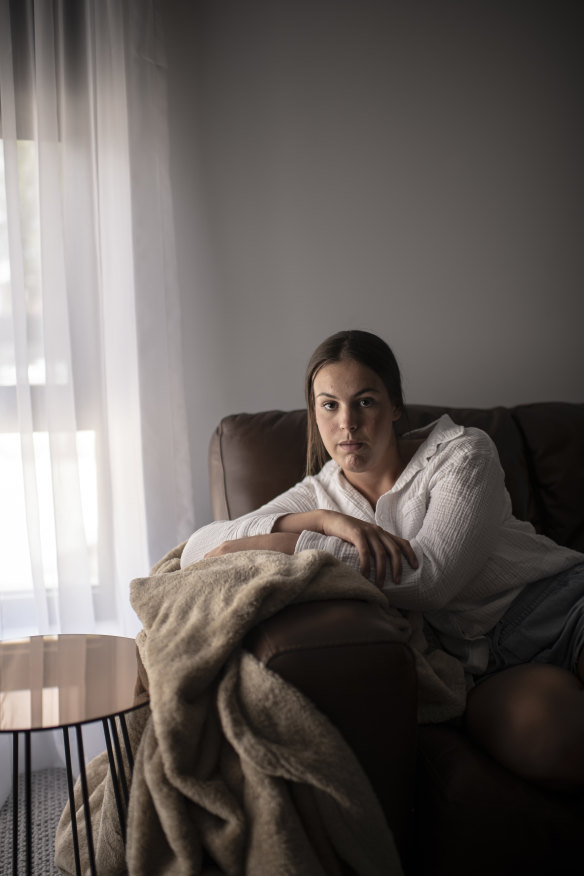
Payton Jacobs, once an athletic 18-year-old, still hasn’t bounced back after her first bout with COVID a year ago.Credit: Wolter Peeters
The World Health Organisation’s list of its reported symptoms now sits at a staggering 200-plus. They include chest pain, joint pain, loss of smell or taste, skin disorders, gut disorders, hair loss, heart palpitations, headache, internal tremors, sore throat, sleep apnoea, nausea, diarrhoea, vomiting, allergies, fever, anorexia, “difficulty articulating self” (one patient reported feeling as if his hands were no longer his own), and most commonly, cognitive impairment or “brain fog”, and immense fatigue.
It’s a systemic condition and almost no part of the body is off-limits: the respiratory, reproductive or cardiovascular systems, brain, ears, eyes, kidneys, gut, liver, skin.
As we know, just having COVID itself can be risky, even if we’ve grown blasé about the virus. The research into long-term damage to organs and systems from a COVID infection is still in its infancy, cautions Gail Matthews; it’s not unanimous, and some pre-dates the introduction of vaccines, or was done with early strains like Delta. Nonetheless, it does seem that in some people, even mild cases of COVID can increase the risk of developing chronic diseases or health conditions you never had before, or perhaps didn’t know you had. Diabetes, for example, tachycardia (racing heart), myocarditis or atrial fibrillation. (Other bacterial or viral infections, such as influenza, can affect the heart, too, because of inflammation, but COVID infections, making the blood stickier, appear to be especially risky.)
Omicron might be less likely to spark serious complications or long COVID; the jury is still out. On the other hand, it infects many more people. Indeed, most of Australia’s long COVID cases occurred last year.
Either way, the kind of long COVID symptoms people are presenting with has broadened over time, says Anne Holland, professor of physiotherapy and head of respiratory research at Melbourne’s Alfred Health and Monash University.
“In the early days, we were expecting persistent respiratory symptoms and people with symptoms similar to post-ICU [syndrome],” says Holland, “and we did see that then – impaired exercise tolerance, weakness of muscle mass, breathlessness. Now we see many more people who have the brain fog, the fatigue, difficulty with memory and concentration, and difficulty with returning to work. We’ve often got people who were very high-performing, at the peak of their career, who need support.”
Tom Andrews is, or was – he’s no longer sure which tense to use – a member of a law faculty with a university in Melbourne. He finished a PhD last year. Before April 2022, the 36-year-old would have described himself as smart, methodical, focused. He also owns a 500-page cookbook on French sauce-making. So, in his worst days of long COVID, when he found himself standing in front of the stove without the faintest idea of how to go about making a meal, he knew he’d arrived at a dark place.
“I could remember cooking dinner in a past life,” he says, “but my brain couldn’t sequence what to do – the prepping of ingredients, turning-on of pots, heating of water, cooking of things. If you’re the sort of person who has built a life around a life of the mind as a teaching and research academic, it’s incredibly distressing to be in this place where you can remember doing really basic things but are now incapable of them.”
His language is still intact – and only an academic can use a word like “phenomenologically” without stumbling – but the other cognitive losses have been frightening. He dislikes the term “brain fog” to describe the way long COVID can mess with your head. “It makes it sound benign, as if a white cloud descends over one’s mind. It doesn’t really get at the experience of a serious cognitive impairment. It’s closer to an acquired brain injury.”
He was “quite unwell” with his first bout of COVID last April, he recalls. “Not hospitalised, but in bed for five days with a high fever and most of the classic symptoms. About two weeks after the acute phase, I felt there was something wrong with my brain. I kept having that feeling you get when you’re trying to get out the door and can’t find your keys and panic a bit.
“Then I started having trouble reading and huge bouts of fatigue would overcome me. I had trouble with comprehension. It happened gradually and got worse over time.” He thought that if he just pushed himself harder, kept trying to work, he’d beat it. “I thought I had some onset of an attention-deficit problem, a problem with concentration. I thought if I just concentrated a bit more, paid a little more attention, made more lists, I’d be able to push through and get better.”
“It’s incredibly distressing to be in this place where you can remember doing really basic things but are now incapable of them.”
It just made him worse. He finally went to a neuro-psychologist. “After more than three hours of cognitive tests, they found that there was a severe deficit of working memory. My sense had been that I was probably a couple per cent off my A-game, not quite capable anymore of performing at the level needed to be an academic in Australia, but the testing revealed I’d actually dropped into the bottom 10 per cent of the population. It was a shock but it did provide some diagnostic clarity that I wasn’t making it up,” he says. “I also had a lot more empathy for my students who say, ‘Reading is really hard.’ ”
The idea you might be “making it up” echoes the history of chronic fatigue/ME, that invisible condition with some similarities to long COVID. It wasn’t so very long ago that chronic fatigue sufferers, mostly female, were accused of being hysterical, neurotic or malingering.
Jack Newsome*, 34, was a business analyst in Canberra before he caught COVID last May. He now has chronic gastrointestinal problems and allergies to all sorts of things, including alcohol, as well as fatigue and brain fog. He recalls the first GP telling him he just needed to “get a life and a girlfriend”. “I also went to an immunologist who couldn’t get me out of there fast enough. The doctors don’t know how to fix it but a lot aren’t trying, either.”
Melbourne woman Miquette Abercrombie, 50, insists many sufferers are still disbelieved. She helps run the Australian Long COVID Community Facebook group, and it’s telling that its membership has shot from 300 in 2020 to almost 3500 now. Interestingly, a survey of its members found most were vaccinated and most were infected in the Omicron wave.
Before Abercrombie caught COVID, in April last year, she was a bookkeeper, a half-marathon hopeful and a gym regular. Now she can barely speak. Her voice is so croaky, slow and breathless, she sounds like a badly programmed bot. She has been crushed by the condition.
Almost a year later, she is still virtually bedridden and relies on a wheelchair. She’s often in pain and says she has a shopping list of symptoms, such as POTS (postural orthostatic tachycardia syndrome, where your heart rate soars when you stand up and you can collapse), as well as conditions she never had before, including diabetes and mast-cell activation syndrome, diagnosed by her GP by her rashes and reactions to histamines. She can’t afford specialists.
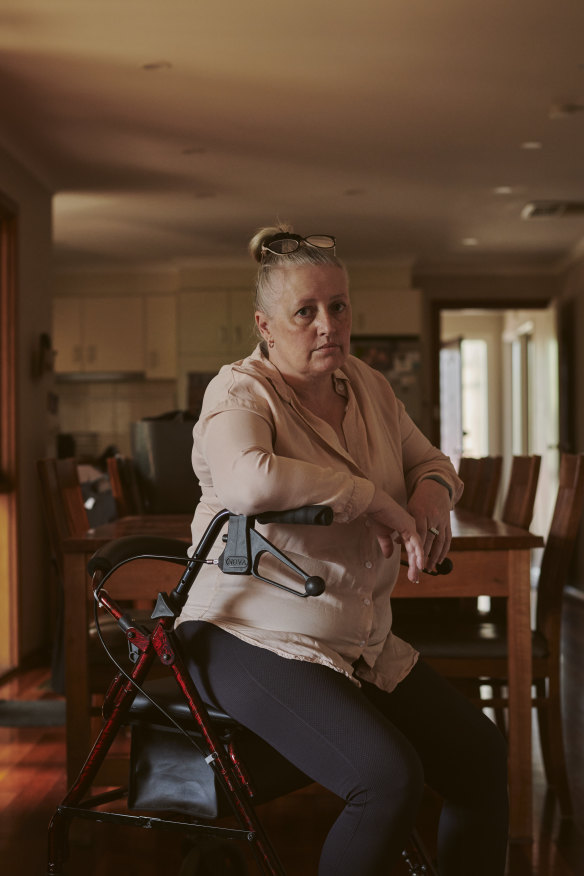
Miquette Abercrombie was a gym regular until catching COVID last year. Now she is virtually bedridden.Credit: Josh Robenstone
Long COVID has pushed her off a cliff financially. It’s considered a disease and not a disability, so most sufferers don’t qualify for disability benefits or the NDIS. Abercrombie says being transformed into a symptom-plagued invalid was bad enough without being doubted as well.
“Initially a lot of people thought I was trying to get sympathy and it couldn’t be that bad,” she says. “Family and friends all drop off because your tests come back as normal so they say, ‘Well, she must be faking it.’ This happens to so many of our members. It’s why the group is such a lifeline. My frame of mind is to just get through each day. That’s it. I’m terrified of getting COVID again because it could kill me this time. People think you’re dramatising but you’re not.”
“Family and friends all drop off because your tests come back as normal so they say, ‘Well, she must be faking it.’ ”
Even some of the scientists trying to crack long COVID have encountered scepticism. Bruce Brew is a senior neurologist at St Vincent’s Hospital in Sydney and the head of the Peter Duncan Neurosciences Research Unit. He and his team of researchers are part of the ADAPT study that has been collecting COVID data since February 2020.
“At that stage, the cognitive aspects weren’t even on the agenda,” Brew remembers. “But we deliberately incorporated some neuro-psychological testing [into the study] and it soon became clear there were cognitive difficulties. We presented the early data at several local, national and international meetings and people didn’t believe us. There was a lot of pushback – ‘Oh, they’ve been through a nasty illness, they’re depressed, anxious.’ It took a while for people to realise this was a bona fide condition.”
Ten months in, Tom Andrews finds himself wishing he had something else. “Throughout this whole process, I’ve honestly been desperate to find out it isn’t [long] COVID. I’d like an alternative diagnosis – ‘It’s not COVID, it was sleep apnoea!’ Something which accounts for the symptoms but has a clear treatment protocol. A pathway out of this experience, which is clear and understood and linear.”
The only way he has improved, to some degree, is through profound rest. He still sleeps 12 to 14 hours most days. In October, he caught COVID again, only mildly, but it made his fatigue worse.
Many long COVID sufferers were once highly active people who now make the mistake of trying to barrel through. They go back to work too early or over-exert themselves. “Over-exertion” can be something as simple as writing a long email, doing too much housework or, as Miquette Abercrombie found recently, sitting in a chair for too long at a family lunch, “completely exhausted from pretending I was okay”.
They end up “crashing” with what’s known as post-exertional malaise, exhausted for hours or sometimes days. Payton Jacobs, the 18-year-old, says her fatigue is still extreme and her “crashes” are like a collapse, leaving her feeling paralysed, her limbs leaden. She struggled through her HSC exams last year, with a bed set up for her so she could sleep when necessary.
Says her mother, Helen: “Never in January [2022], when she first got sick, did we expect we’d still be dealing with this. Never. The GP we saw originally said she’d be better in four weeks at the most. Payton kept thinking there’d be a change. It’s sad, but now she’s not expecting a quick fix with anything.” At one point, the desperate family was thinking of trying a long COVID centre in Thailand.
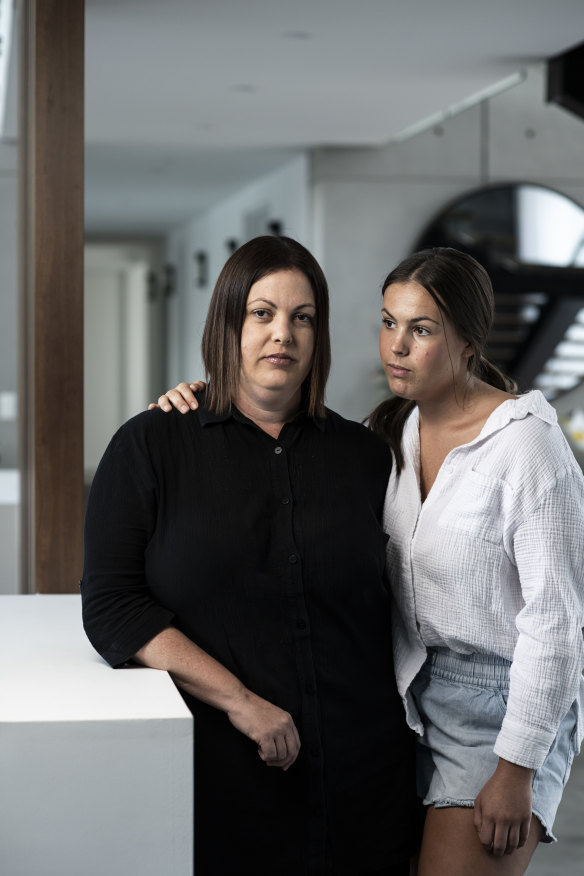
Payton Jacobs, with her mother, Helen. At one point, the desperate family was thinking of trying a long COVID centre in Thailand.Credit: Wolter Peeters
The handful of overstretched long COVID clinics here wish they had more answers. In the absence of a breakthrough, they’ve had to fall back on conventional approaches to rehab medicine, with limited success. The bigger clinics can offer on-site investigations if necessary – neurological, cardiac, and so on – but the mainstays are still physio, occupational therapy, and neuro-psychology. Steven Faux acknowledges that long COVID takes a heavy mental toll.
“You’ve got to live with uncertainty, not knowing how long it’s going to go on for,” he says. “You’ve got to have the coping skills for that, and a lot of people don’t, especially if they’ve been high-achieving and perfectionist, which is the phenotype we often see.
“The other issue it causes is over-investigation, with test after test, and that’s anxiety-provoking. You know, ‘We’re going to do an MRI.’ ‘Shit, I hope you don’t find a brain tumour.’ ”
But what’s the point of an MRI if there’s no way to fix a problem associated with long COVID? “Sometimes it’s vindication,” Faux says. “A lot of people want to know, ‘I’m not faking it, I have got a weird thing in my brain.’ That’s a big deal. A lot of people who come to the clinic say, ‘I saw you, the tests showed me all the things that were wrong with me, I feel incredibly relieved.’ ”
On the other hand, standard imaging may not reveal any abnormalities. “Only 19 out of the 28 patients with long COVID in the ADAPT study had abnormal MRIs. But you can still have massive brain fog, so it’s a different mechanism.”
Even now, no one is sure what’s going on with long COVID. In most illnesses, the immune system deals with the problem and then switches off. That’s not happening here, says Bruce Brew, who’s also president of the International Society for NeuroVirology. It may be that the stimulus (COVID) is “tricking” the immune system, or that the immune response is wrong. Or it could be a misleading stimulus and a faulty response. Both can cause damage.
With the stimulus, the thinking is that uncleared toxic viral “bits” floating around could be confusing, and continually stimulating, the immune system, making it think it still has COVID to fight. (It’s also possible there’s ongoing, low-level production of the actual virus but there’s no hard evidence of that so far, says Brew.) Normally the body knows it can live with bits of leftover virus or infection and doesn’t stay on high alert.
In the response scenario, the immune cells are staying overactive, for whatever reason – maybe a faulty off-switch, for example. It’s like a driver who keeps their foot on the accelerator when they should know it’s time to apply the brake. As a result, the immune system keeps releasing high levels of inflammatory substances, such as interferons and cytokines, and manufactures autoantibodies. (Autoantibodies make the body mistakenly attack itself, as in auto-immune diseases such as lupus or rheumatoid arthritis.)
Just as Brew and his team have been studying those pathways in relation to the brain, and others have been looking at the heart and respiratory systems, Gail Matthews and a group of immunologists at the Kirby Institute have been looking for answers in the blood. “Something is triggering elevated levels of interferons but we don’t know what,” she says. “It’s the sort of picture you’d see if someone was fighting off an acute infection, when the body’s immune system goes into overdrive. And that’s often what causes people’s ‘symptoms’ when they’re unwell, say with flu.
“It’s not the virus but the body’s response to the virus that makes you feel so lousy; body aches, temperature and so on. That’s your body’s immune system activating. If that signal is constantly switched on, then it’s constantly driving some of the symptoms – of fatigue and so on. It’s like your body is constantly trying to fight a viral infection.”
Part of her routine assessment is to exclude any evidence of blood clots – brain clots and heart clots, for example – because COVID is known to enhance clotting. Internationally, a growing number of researchers suspect that much tinier clots could lie at the heart of long COVID. These microclots could persist for months or years after infection, blocking up capillaries and reducing the flow of oxygen. It could explain the shortness of breath, fatigue, brain fog, organ damage. They are so minute they can’t be seen with ordinary imaging techniques.
But even if the basic theory is right, a crucial unknown, and one that would influence treatment, is whether the microclots are leftovers from an acute COVID infection, or are forming – and so will keep forming – in response to something else still there, such as a lingering SARS-CoV-2 spike protein.

Infectious diseases expert Gail Matthews has been looking for possible long COVID answers in blood: “Something is triggering elevated levels of interferons but we don’t know what.”Credit: Louie Douvis
Frustratingly little progress has been made with treatments for long COVID, although that’s the case with many other post-viral conditions, too, whether they follow glandular fever or chickenpox, polio or Ebola. Still, the global impact of long COVID means the research effort has been more intense – and scattergun. Gail Matthews points to the massive and motley list of long COVID-related trials on the US clinicaltrials.gov website.
“It shows just how many different therapeutic interventions are being trialled, from dietary supplements to hyperbaric oxygen, [certain] stem cells, statins, antidepressants,” she says. “That broad range says to me people don’t know where to begin, although we are finally starting to see large randomised therapeutic clinical trials get underway. For example, Recover COVID in the US [trialling the antiviral Paxlovid] and STIMULATE-ICP in the UK.”
The hope is that existing drugs will turn out to be useful. Antivirals are one possibility and in December, for example, an assistant professor of psychiatry and neurology at Yale Medicine in the US reported some success in reducing brain fog by using the blood-pressure drug guanfacine, and NAC, an antioxidant – a combination he has used to treat traumatic brain injury and PTSD. That trial, however, was tiny.
Newsome, the Canberra man, is worried that Australia’s cautious approach to unorthodox or new treatments will see a solution come belatedly. “We need help now. Waiting five years [for all the evidence] is ridiculous. By then it might be too late for some of us, if treatment is time-critical.”
Researchers can’t test every idea, however, and they can’t put patients at risk. Trials are expensive and there has to be a rationale, says Steven Faux. “For example, the drug and alcohol people are really interested in naltrexone [a drug used to ease withdrawals in heroin users] because it has been shown to be anti-inflammatory. Okay, not a bad idea. Let’s start a randomised, controlled, double-blind study. Otherwise, it’s the same as ‘Let’s inject Pine-o-Cleen into our veins, let’s try chloroquine, chloroquine might work!’ It’s in that mad, unproven area. There is a good basis to exploring naltrexone, but it also has side effects and safety issues.”
On the other hand, he agrees with Newsome about the urgency. “In the Long COVID clinic, we have people who can no longer work, can’t function and so we have to deliver the treatments, the best we can cobble together from the research and the evidence around.”
Last year he gave a talk about long COVID to rural GPs. “They told me, ‘If patients come to us with long COVID, we’ve decided we’re going to put them all on aspirin, an antihistamine and an antidepressant.’ They said that so far, they were having very good results,” he recalls.
“So we need to have a look at studies like that. Again, it’s rational – antihistamines because there’s ongoing mast-cell activation in the chest, aspirin because of [possible] microclots, and antidepressants because many of them have mental-health issues that are undiagnosed.”
Meanwhile, desperate long-haulers are willing to try just about anything. Forums are full of shared experiences and suggestions, ranging from vitamin C injections to melatonin and sunshine, from antioxidants like glutathione to TENS machines (to stimulate the vagus nerve). A few are reportedly easing symptoms, but none is producing spectacular results.
“You have to go through a process of grieving the person you once were. But you have to accept there is no going back. There’s only changing.”
In July last year, a joint investigation by Britain’s ITV News and the British Medical Journal found some long-haulers have spent thousands of dollars on treatments, unproven for long COVID, at private clinics in Europe. One, for example, is a process called apheresis, where all the blood is removed and its components separated before it’s transfused back into the body (apheresis is also used, in other circumstances, to treat some blood cancers). Each cycle reportedly costs close to $3000 and some patients have had more than 20 cycles. A few reported noticing some benefit. Many said they were no better, just out of pocket.
“The research [for apheresis] is really poor,” says Faux. “On the case studies I’ve seen, some people get better after the first one but it’s not sustained. If it was going to clean your blood out, you’d expect you’d be better all the time.”
Tom Andrews says that, aside from the healing power of rest and time, he has found meditation and psychology sessions helpful. “It doesn’t change the symptoms but it helps to change how you feel about them,” he says. “A lot of my identity was tied up with my career, as it is for many people. So having that taken away, and never knowing if you’re going to be capable of going back into that line of work, means you have to go through a process of grieving the person you once were. But you have to accept there is no going back. There’s only changing.”
Even so, he’s angry at the lack of real support or help out there, arguing that an increased risk of long COVID was “an entirely predictable consequence” of lifting restrictions and letting the virus roam free in the community.
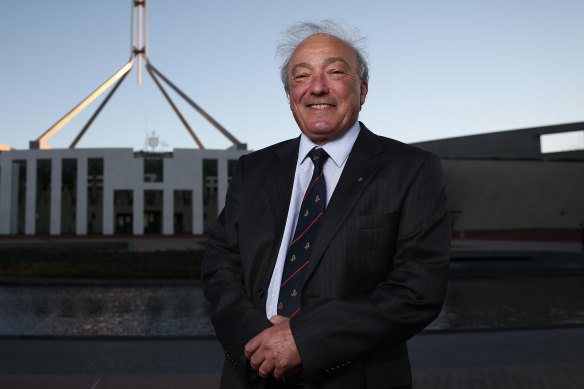
MP Dr Mike Freelander is chairing a federal parliamentary inquiry into long COVID.Credit: Alex Ellinghausen
“Opening up was probably the right way to go,” he says, “but we needed to make sure we caught the people who suffered consequences as a result. The reality of suffering doesn’t go away because you’re choosing not to look at it.”
To date, the handful of long COVID clinics have struggled to cope with demand. Most are based in big cities. Some have waiting lists almost 12 months long. In rural areas, it’s worse. Dr Sumitha Gounden, a rehabilitation staff specialist at Orange Base Hospital in western NSW, established a regional clinic last year. But as she told The Age in November: “There are no resources … It’s only me.”
Gounden remains the only doctor consistently treating long COVID in her entire district of 276,000 people. Some clinics, such as the one attached to Melbourne’s Austin Hospital, closed late last year when funding ended.
“There’s a lot of uncertainty about ongoing funding,” says Faux, echoing widespread concerns. “And some promises are still to be met. In the meantime, hospitals are taking whatever action they can, and it’s variable. Your services for long COVID will be postcode-driven.”
A federal parliamentary inquiry into long COVID, chaired by MP Dr Mike Freelander, is due to report in late March or early April. Freelander says it’s already clear there’s a lack of hard data around long COVID, as well as around related matters, such as ongoing vaccine side effects. He doesn’t want to pre-empt the findings but agrees it’s likely only a few long COVID clinics will be kept on, as “centres of excellence and expertise that could act as referral centres for patients of concern”. GPs will be expected to handle the rest.
One bright spot is that most long COVID sufferers do seem to improve with time, especially with help – sometimes within six months, sometimes longer. “The anecdotal evidence,” says Freelander, “is that the vast majority get better within a year or two, although we still don’t have really good data about that.”
Even that, of course, is a long time to be locked out of life. As the world moves on, thousands of long-haulers can’t help but feel abandoned, left clinging to the pandemic wreckage, still plagued by what now feels like a forgotten disease. All they can do is wait.
To read more from Good Weekend magazine, visit our page at The Sydney Morning Herald, The Age and Brisbane Times.